Grounded
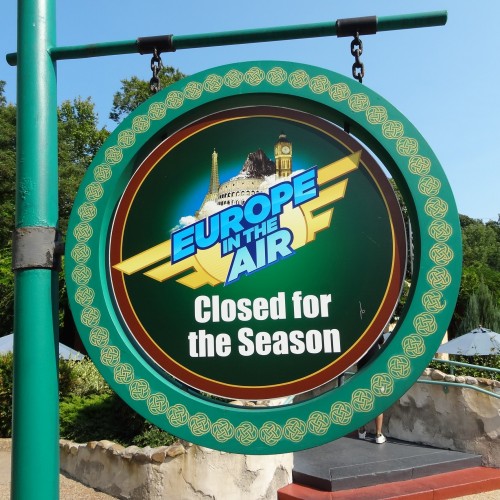
Some may make the case that Europe in the Air was a fair stand-in for Disney’s more elaborate Soarin’ Over California, simply reigned in by reasonable seasonal park limitations. While Busch Gardens’ attempt to recreate Soarin’ within its European story wasn’t exactly novel, it was an ambitious concept nonetheless. In some sense, it’s as if they even predicted Disney’s ride transforming into the global Soarin’ Around the World in 2016, which shares many of its landmarks.
Unfortunately, the ride didn’t make enough fans to become a fan favorite, or even to remain in operation. It opened in 2010, but closed in June 2013 – the height of the summer season – allegedly as a cost-saving measure while SeaWorld’s belt tightened amidst its well-known struggles. (Blackfish was released in January of that year.)
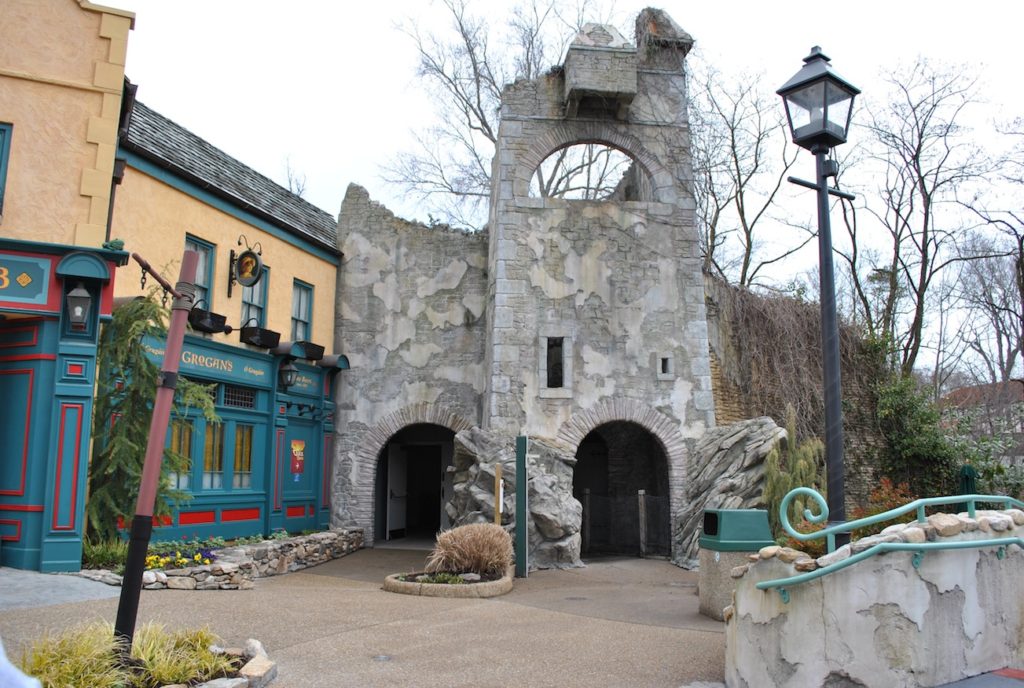
Though it re-opened in 2014, the ride ultimately closed for good at the end of the 2016 season, all without a word from Busch Gardens. There was no fanfare over the ride’s final flights, just as there’d been relatively little over its first. Locals had more or less gotten used to skipping the simulator, and – depending on their age – most seemed simply to gesture toward the building and describe it as the place where either Questor or Corkscrew Hill used to be.
Though Europe in the Air was one of the shortest-lived of the building’s tenants, Busch Gardens made an ambitious promise: that, in 2018, an all new “Virtual Reality Action Ride” would overtake Killarney… and the prominent four-leafed clover in marketing material seemed to signal that it just may have something to do with the legends of Ireland once more…
Battle for Eire
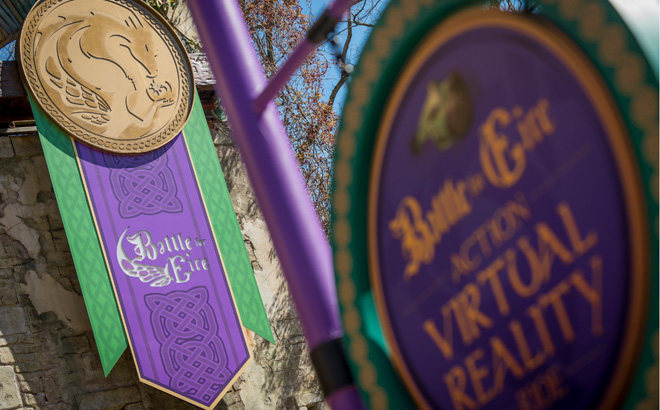
The Otherworld needs a warrior.
So we’re told in the lead-up to Battle for Eire, the simulator that opened at Busch Gardens Williamsburg in 2018. Battle for Eire follows the last fairy guardian, Addie, as she and her faithful dragon Ollie attempt to win back the legendary Heart of Eire from the darkness of the evil Lord Balor and save the magic of Ireland. It’s a compelling enough story, and a cast of original characters as strong as any SeaWorld’s ever featured.
You might even consider Battle for Eire a sort of “spiritual sequel” to Corkscrew Hill, once more dispensing with the mist that hides the ancient and mythical creatures of Ireland from our normal view and sending guests gliding through a world of dragons, fairies, nymphs, and curses. (It also made the ride’s cavernous, enchanting queue and castle-like interior make sense again.)
And yes, Battle for Eire re-uses the tried-and-true ivy-covered tower entrance dating back to Corkscrew Hill and its mystical cavern queue (obviously sans airport lighting, and more believable than ever in terms of the ride to follow), re-purposing the attraction’s two pre-show scenes and the dual motion bases (all overlaid with a feeling of more permanence and dedication than the simple switch to Europe in the Air).
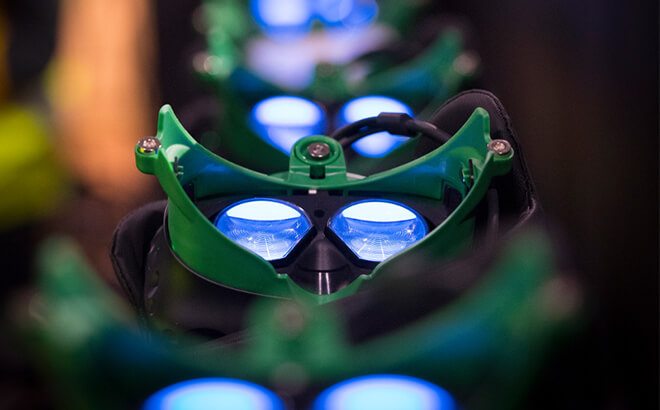
But the real stand-out is that Battle for Eire is billed as the first ever virtual reality motion simulator. So while the motion base continues to tilt and lean and rumble as before, riders are now peering into the Otherworld via “Enchanted Lenses” (virtual reality handhelds connected to the ride vehicle) that magnetize to “Emerald Masks” (adjustable headgear picked up in the queue).
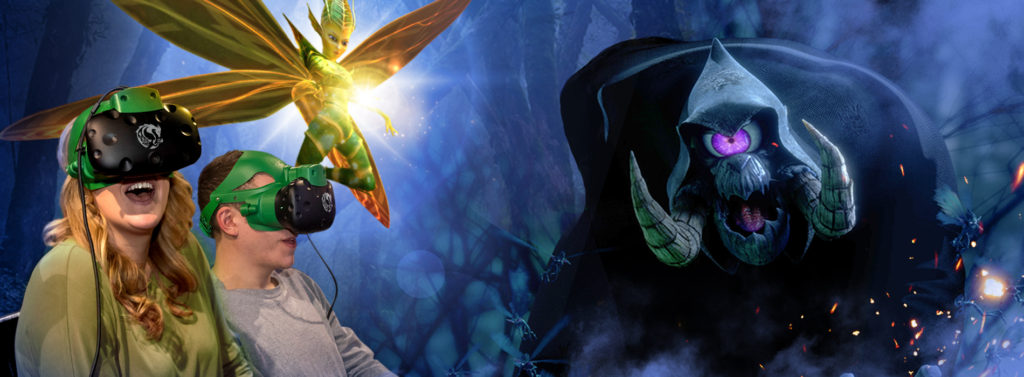
Seemingly solving (or at least taking a giant leap for) the inefficiency of virtual reality rides, Battle for Eire is truly a 360-degree experience, with riders able to look in all directions via the VR component while venturing through the Irish adventure. (Those opting to skip the sometimes-dizzying effects of VR can instead watch the film projected traditionally on the ride screen.)
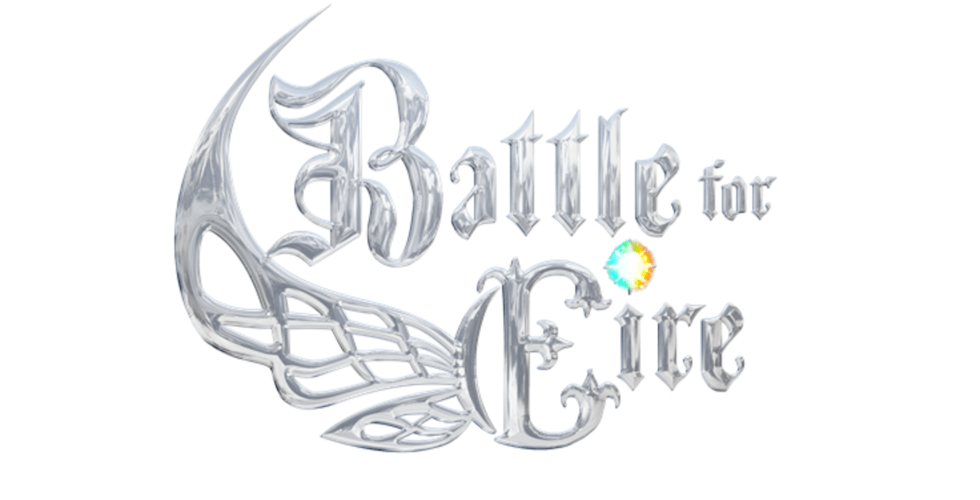
While reviews of Battle for Eire have been mixed (with many noting the simulator’s reduced motion, image quality, and the inevitable “screen slide” in quality over time), the ride has overall been warmly welcomed as a new family attraction, thankfully re-inserting some commitment to European folklore and fantasy into the park after a dry spell… and the unfortunate closure of the park’s other dark ride, coinciding with Eire’s opening… Which brings us to the unfortunate truth…
SeaWorld’s sunken dark rides
When it comes to dark rides and simulators, the parks formerly united by Busch Entertainment (and today called SeaWorld Parks) haven’t always fared well. Looking through the timeline of their portfolio, it seems that most any time SeaWorld Parks attempt to integrate cutting edge technology or significant storytelling, the resulting ride is doomed before it gets off the ground.
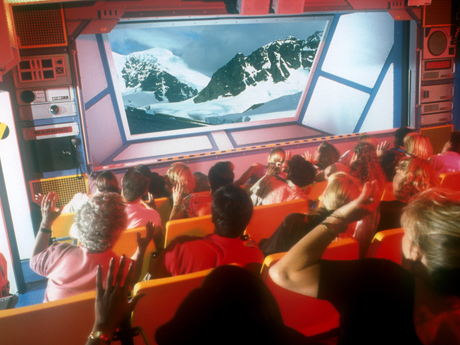
Just two years after Questor’s 1990 debut brought the ATLAS technology to a seasonal, regional theme park, SeaWorld opened its own ATLAS-style simulator, Wild Arctic. Now in its 26th year, the attraction isn’t exactly a headliner, and may border on embarassment… Luckily, it’s merely the precursor to the park’s frigid Arctic animal exhibit and not necessarily billed as a standalone ride.
Of course, Questor became the disastrous King Arthur’s Challenge in 1996 before quickly bowing to 2001’s Corkscrew Hill, then Europe in the Air, and now Battle for Eire.
At least it survived at all – after the Tampa Bay Park’s Questor became Akbar’s Adventure Tours, it closed forever in 2007 with its mechanics gutted. The space is currently used for haunted houses during the park’s Howl-o-Scream.
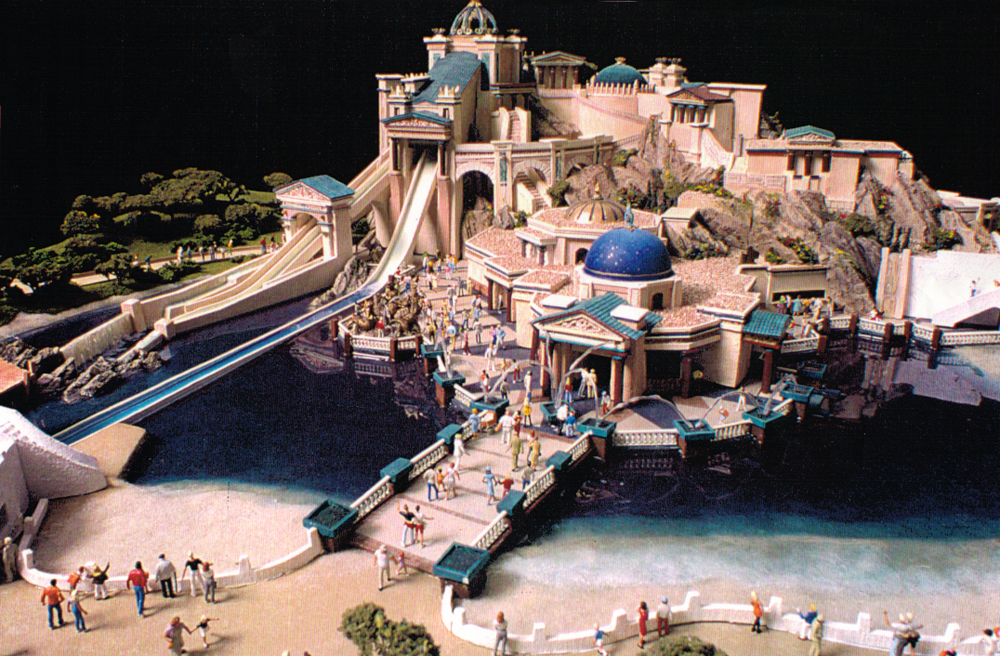
SeaWorld’s short-but-sweet foray into taking on Disney and Universal’s cinematic standards in the “Ride the Movies” era probably peaked with a 1998 dark ride / flume ride adventure at SeaWorld Orlando… unfortunately, it became the subject of its own Declassified Disaster: Journey to Atlantis, which seems to be operating today only because it would be too expensive to demolish the once-ornate attraction.
Back at Busch Gardens Williamsburg, a 2004 addition seemed poised to once again redefine the seasonal park’s place in the theme park pantheon. Just as Questor had done more than a decade earlier, a new dark ride in the park’s German-themed Oktoberfest unthinkably brought cutting-edge simulator technology to the unlikely seasonal park.
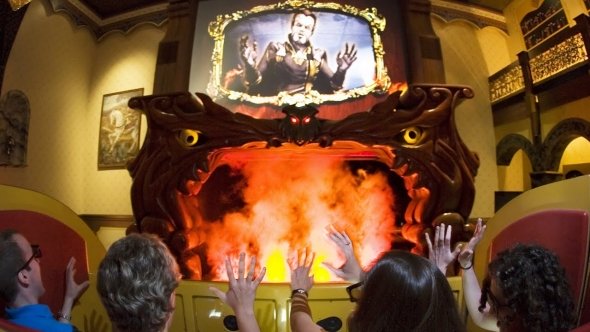
That Lost Legend: Curse of DarKastle unforgettably and smartly re-purposed the roving 3-D dark ride simulator ride system behind Universal’s Modern Marvel: The Amazing Adventures of Spider-Man that no one would’ve expected Busch Gardens to attempt next, wrapping it into a brilliant German legend of the mad King Ludwig. It was a perfect pick for the park and its focus on European myths and stories. However, the advanced technology seemed too much for SeaWorld to manage, and it closed forever in 2017 despite its still-star-potential.

SeaWorld went all out again with 2013’s Empire of the Penguin. Yet again, it was a shock to the industry that SeaWorld would be the first to bring the industry-leading trackless, LPS dark ride technology to the United States… Unfortunately, the product is a ride that’s made few fans and become a punchline on enthusiast discussion boards.
Battle for tomorrow
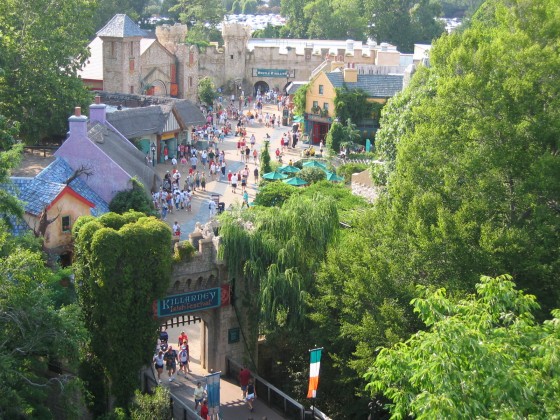
Looking across SeaWorld’s portfolio of parks, Battle for Eire might signal the start of something new… or it may be simply the next example of a SeaWorld Park boasting an industry-leading dark ride that’s simply too ambitious to maintain. Is Battle for Eire a more permanent addition than the swapping simulators that came before it? By all accounts, yes… and yet, what will virtual reality technology look like in five years? Ten? Can SeaWorld Parks afford to ensure that Battle for Eire keeps up?
Put another way, does Battle for Eire finally strike the balance between theming, storytelling, technology, heart, and longevity that no other SeaWorld or Busch Gardens dark ride had managed to perfect?
At the end of the day, SeaWorld’s dark rides (and particularly the simulators set in Busch Gardens Williamsburg) have always been a step forward and a slide back…
Questor followed in the footsteps of STAR TOURS, but lacked the longevity and production value.
Journey to Atlantis was SeaWorld’s best impression of Splash Mountain, but its nautical tale was too convoluted and confusing to put it on the map.
DarKastle wasn’t just a re-application of Spider-Man’s SCOOP technology – it was a perfectly-placed dark ride telling one of the most compelling original stories outside Orlando and Anaheim… but when the technology Busch Gardens bet big on needed upkeep and investment, the park abandoned the ride altogether.
Europe in the Air, then, was SeaWorld’s spin-off of Soarin’, but lacking its grace, heart, and staying power.
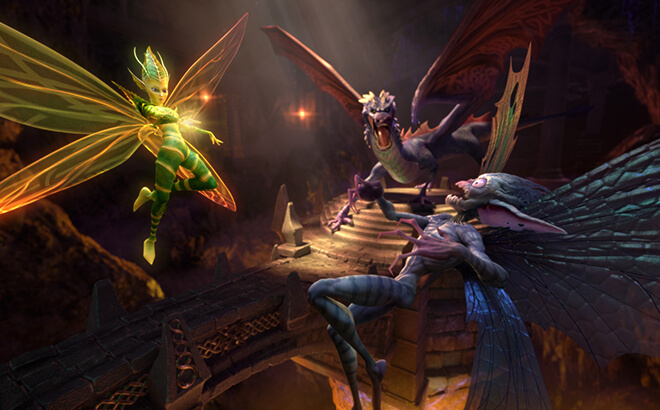
Battle for Eire, so far, looks to be the first time that Busch Gardens is sincerely ahead of the field, trying something legitimately new…And as a result, the ride may be their first bona fide success…! …Unless, as some expect, the era of virtual reality has already come and gone after just a handful of VR-coaster overlays proved too slow-loading and low-quality to survive and after the COVID-19 pandemic wiped out guests’ interests in 3D glasses and headsets for good.
In any case, the park’s lofty ambitions have created some of the best – and worst – examples of simulators, and Battle for Eire is either certain to reshape the possibilities for seasonal parks, or fade into a remnant of yesteryear relying on outdated technologies and expensive upkeep.
The only way we’ll know is to wait and see…
If you enjoyed our inside look at Europe in the Air, don’t forget to glide over to our complete collections of closed, classic Lost Legends, today’s most incredible Modern Marvels, never-built Possibilitylands, and a whole file of Declassified Disasters to explore some of the biggest flubs in theme park history.



